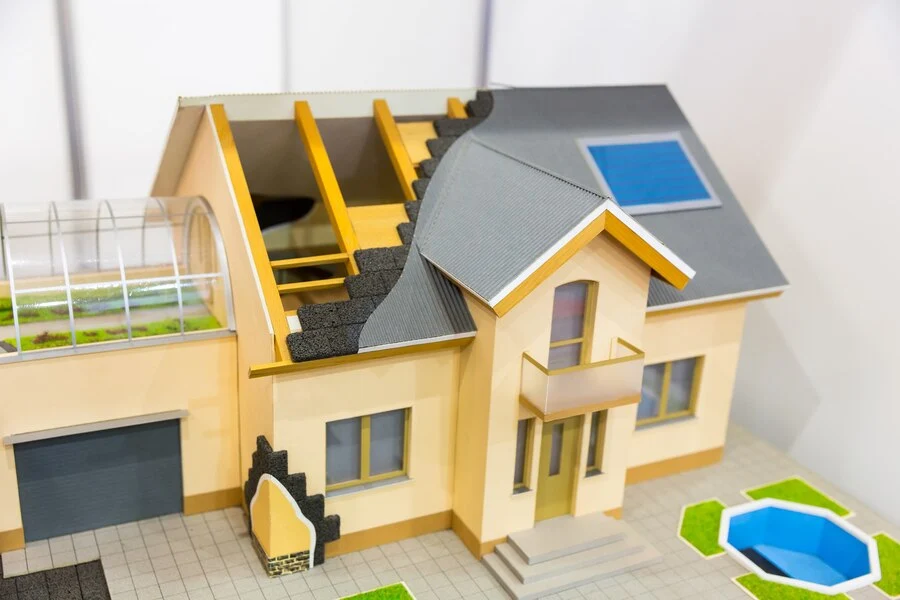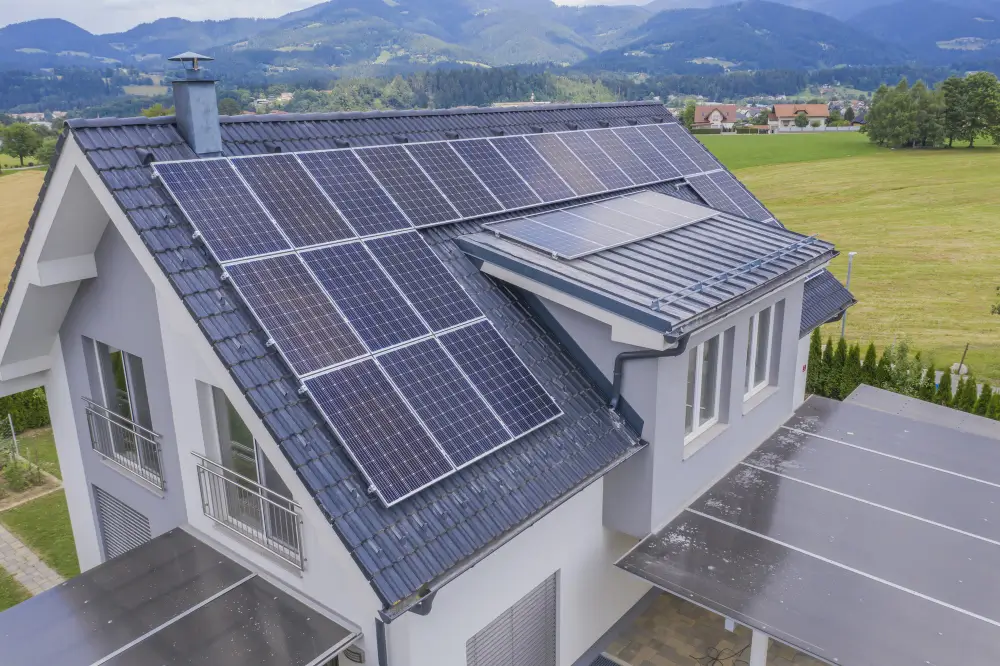Are you tired of the rising electricity bills and want to take control of your energy source? Going off-grid with solar panels is an exciting option that offers both environmental sustainability and financial savings. But how many solar panels do you need to power your entire house off-grid? In this article, we’ll delve into the considerations, calculations, and benefits of determining how many solar panels to run a house Off Grid?
Understanding Off-Grid Solar Power

Off-grid solar power involves harnessing energy from the sun through photovoltaic panels. These panels convert sunlight into electricity, which can be used to power your home. To determine how many solar panels you need, you must first evaluate your energy consumption patterns.
Calculating Your Energy Needs
Begin by assessing your daily energy usage. Note down the wattage of each appliance, lighting, and other electronic devices you regularly use. Multiply the wattage by the number of hours you use each item to determine daily watt-hours (Wh). Sum up all the Wh to get your daily energy requirement.
Solar Panel Efficiency and Output
Solar panels have varying levels of efficiency in converting sunlight into electricity. Modern panels typically have an efficiency range of 15% to 22%. This efficiency affects the amount of energy a panel can generate within a given space.
Consideration of Geographic Location

The amount of sunlight your location receives directly affects solar panel performance. Areas with more sunlight can generate more energy, while cloudy regions might require additional panels to compensate for lower output.
Battery Storage Capacity
Storing excess energy is crucial for off-grid setups. Batteries store energy generated during the day for use at night or on cloudy days. Your required battery capacity depends on your energy consumption and the number of days you want to be self-sufficient.
Sizing Your Off-Grid Solar System
To calculate the number of solar panels you need, divide your daily energy requirement by the average daily output per solar panel. This calculation gives you a baseline number, which you can adjust based on other factors.
Factors Influencing Solar Panel Efficiency
Shading, temperature, and panel orientation can impact solar panel efficiency. Ensuring panels are free from obstructions and properly oriented maximizes their performance.
DIY vs. Professional Installation
Deciding between a DIY installation or hiring professionals affects the efficiency and safety of your solar setup. Professional installations offer expertise and warranties, while DIY projects provide cost savings.
Financial Considerations
While off-grid solar setups require an initial investment, they can lead to long-term savings. Consider factors like the cost of panels, batteries, installation, and potential government incentives.
Environmental Benefits of Off-Grid Solar
Going off-grid reduces your carbon footprint and dependence on fossil fuels. It contributes to a cleaner environment and a more sustainable future.
Maintenance and Longevity of Solar Panels
Regular maintenance ensures optimal panel performance. Quality panels can last 25 years or more, making them a durable and reliable energy source.
Making the Transition Off-Grid
Transitioning to off-grid living involves lifestyle adjustments and understanding your energy consumption habits. Conservation and efficiency are key to a successful off-grid experience.
Case Studies: Successful Off-Grid Solar Homes
Explore real-life examples of homeowners who successfully transitioned to off-grid living. Learn from their experiences and challenges they overcame.
Off-Grid System Installation Labor Costs: Factors and Estimates
In 2023, for residential off-grid installations, labor costs can range from $2,500 to $12,000 or more. Commercial systems may have higher costs due to their complexity. However, these are rough estimates and can vary significantly based on the factors mentioned above and local market conditions. To get accurate labor cost estimates, it’s advisable to consult experienced installers in your area who can provide tailored quotes based on your project’s specifics.
How Many Solar Panels To Run A House Off Grid?

The number of solar panels required to run a house off the grid depends on several factors, including the energy consumption of the house, the efficiency of the solar panels, the available sunlight in your location, and the capacity of the batteries used for energy storage. To provide you with a rough estimate, I’ll outline the basic steps you can take to calculate the number of solar panels you might need:
Determine Your Energy Consumption: Start by understanding how much energy your house consumes on a daily basis. This can be measured in kilowatt-hours (kWh). Look at your electricity bills to get an idea of your average daily usage.
Estimate Daily Solar Energy Production: The amount of energy a solar panel can produce depends on its wattage and the amount of sunlight it receives. On average, a solar panel might produce about 4-5 hours of peak sunlight-equivalent energy per day. Multiply the wattage of a single solar panel by the average hours of sunlight to get the daily energy production of one panel.
Calculate Total Solar Panels Needed: Divide your daily energy consumption by the daily energy production of one solar panel to find out how many panels you need to cover your energy needs.
Account for System Efficiency and Battery Storage: Solar panel systems aren’t 100% efficient, so it’s a good idea to factor in an efficiency loss of around 10-20%. Additionally, you’ll need a battery storage system to store excess energy generated during the day for use at night or on cloudy days. The capacity of the batteries will also influence the number of panels required.
Location and Climate: The amount of sunlight your location receives throughout the year will impact the efficiency of your solar panels. Areas with more sunlight will require fewer panels compared to regions with less consistent sunlight.
Panel Wattage: The wattage of the solar panels you choose will also affect the number needed. Higher-wattage panels can generate more energy, meaning you might need fewer of them to cover your energy needs.
Remember that this is a simplified explanation, and actual calculations can be more complex due to various factors. It’s also important to consider seasonal variations in sunlight and your energy needs.
| Energy Requirement | 350-watt panels needed | Space occupied |
| 8 KW | 23 | 400 square feet (approximately) |
| 10 KW | 29 | 500 square feet (approximately) |
| 15 KW | 43 | 750 square feet (approximately) |
This chart clearly shows that an off-grid solar system can account for all your energy needs, and still have a lot of space left on the rooftop for future expansion.
Conclusion
The use of solar energy to power a home off the grid offers many advantages for those willing to commit to the initial cost of installation. These benefits include independence from the power grid and significant savings over time resulting from the reduction or elimination of energy bills.
An off-grid solar system can be designed and optimized to meet one’s energy needs by taking into account energy consumption, solar panel requirements, battery storage, and load management.
When planning and installing your off-grid solar system, be sure to consult with solar professionals and take into account local regulations (and incentives) for a smoother installation experience.
Take advantage of solar energy and become independent from the ever-increasing energy bills. For more about solar energy visit now smartenergygap.com.
FAQs:
How many batteries do I need for off grid?
An off-grid home is one which is completely self-reliant, and does not have to look upon the national energy grid to fulfill electricity needs.
Off-grid systems consist of a large number of solar panels generating a significantly high amount of electricity, and require a lot of batteries to store excess electricity that can be used later on low-sunlight days. For this reason, homeowners looking to go off grid should be prepared to have anywhere around 10-12 batteries to store all the extra energy that can help them on a rainy day.
Can I completely eliminate my electricity bills with off-grid solar panels?
Yes, by generating enough solar energy and effectively managing your energy consumption, you can eliminate your electricity bills.
What happens during cloudy days when solar panels produce less energy?
Battery storage systems store excess energy during sunny days, which you can use during cloudy periods.
How do I maintain and clean my solar panels?
Regularly clean panels with water and a soft cloth, and schedule professional inspections to ensure optimal performance.
Can I expand my solar setup in the future if my energy needs increase?
Yes, you can expand your solar array by adding more panels and adjusting battery storage to accommodate increased energy demands.
Are there any tax incentives for installing off-grid solar systems?
Tax incentives vary by location. Research local and federal incentives to determine the financial benefits of your off-grid solar investment.
Answered my questions about off grid solar panel needs
Can you elaborate on load management strategies for off-grid solar systems? How does efficient load management impact the sizing and optimization of the solar panel and battery storage system?
We are happy to have your question Graham! Efficient load management in off-grid solar involves prioritizing essential energy usage, utilizing energy-efficient appliances, and scheduling heavy consumption during peak sunlight. This practice impacts system sizing by potentially reducing the number of solar panels and battery capacity needed, optimizing the system for cost-effectiveness and reliable power supply.